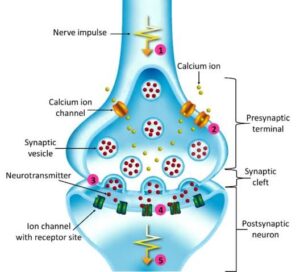Back to: ZOOLOGY 400 Level
Welcome to class!
Hello my amazing scholar! You’re doing great and I’m so happy you’re here again. Today’s lesson is all about how your body senses chemicals like flavours and smells, and how it responds to touch, pressure, and vibration. Yes, we’re talking about Chemoreception and Mechanoreception — two of the body’s clever ways of picking up information from the world around you. Let’s make it simple and relatable, just like your everyday Nigerian experiences.
Chemoreception And Mechanoreception
Your body is full of sensors — like built-in alert systems. Some sense chemicals (chemoreception), while others sense mechanical changes (mechanoreception). These help you enjoy jollof rice, avoid bad smells, feel a tap on the shoulder, or even keep your balance.

Chemoreception: How You Sense Chemicals
Chemoreception is the detection of chemical stimuli in the environment. This happens mainly through two senses:
Taste (Gustation): Your tongue has taste buds, especially on the sides and tip. These taste buds contain receptor cells that detect sweet, sour, salty, bitter, and umami (savoury) tastes. When you eat something, chemicals from the food dissolve in saliva and stimulate these receptors.
Smell (Olfaction): Your nose has olfactory receptors in the upper part of the nasal cavity. When you inhale, airborne chemicals bind to these receptors and send signals to the olfactory bulb in your brain. That’s how you smell fried plantain even from the kitchen!
Both systems help with flavour detection, safety (e.g., sensing spoiled food), and memory — because smells are strongly linked with memories.
Mechanoreception: How You Sense Physical Forces
Mechanoreception is the detection of mechanical forces like pressure, stretch, vibration, and touch. This happens through special receptors in your skin, muscles, and ears.
Types of mechanoreceptors include:
Touch receptors in the skin that detect light pressure or fine touch (like when someone brushes your arm).
Pacinian corpuscles detect deep pressure and vibrations.
Proprioceptors in muscles and joints tell you about the position of your body parts — like how you know your hand is raised even with your eyes closed.

Hair cells in the inner ear (in the cochlea and semicircular canals) detect sound and help maintain balance by sensing motion.
Example: Think about when you step on a sharp stone barefoot — ouch! Your mechanoreceptors quickly send a signal to your brain, helping you respond quickly and move your foot.
Summary
- Chemoreception involves sensing chemicals through taste and smell.
- Taste buds detect sweet, sour, salty, bitter, and umami tastes.
- Olfactory receptors in the nose detect smells and send signals to the brain.
- Mechanoreception involves sensing touch, pressure, vibration, and body position.
- Receptors in the skin, muscles, and inner ear help your body react to physical changes and stay balanced.
Evaluation
- What is the main function of chemoreceptors?
- Name the five basic tastes the tongue can detect.
- Where are olfactory receptors located?
- What type of receptor helps detect deep pressure and vibration?
- How do mechanoreceptors in the inner ear help with balance?
Bravo, champion! You’ve just unlocked how your body senses tastes, smells, touch, and motion — and how it keeps you aware and protected. Keep going strong, because every lesson brings you closer to your dream. With Afrilearn by your side, learning is always fun, smart, and built just for you. Keep rising!
